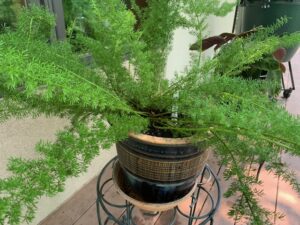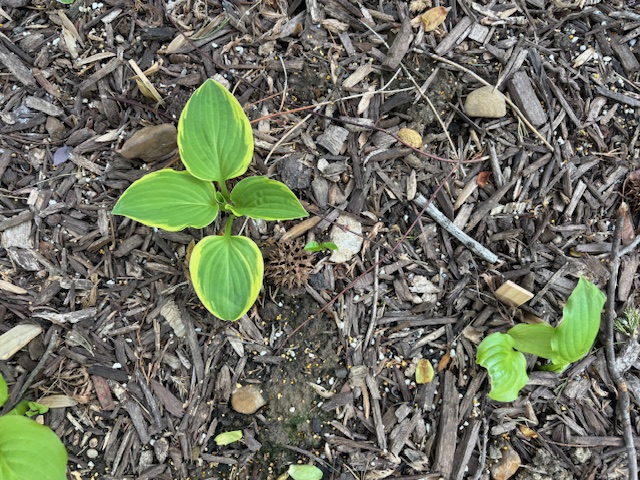When is a Fern not a Fern?
Views: 281

Every once in a while, maybe more often than I would like, Life shows me I don’t know everything! In fact, I am continually reminded of how little I know. Nothing like being humble, I guess.
Such was the case with a fern I brought home last year – it was a “foxtail fern” and the name’s appropriate. Its fronds do resemble a fox’s bushy tail.
So, this year, you can imagine how bumfuzzled I was when I noticed it was blooming. Well, I may not be the brightest bulb in the box, but I do know that ferns don’t bloom!
The foxtail fern (Asparagus densiflorus, or Asparagus densiflorus ‘Myers’, or Asparagus densiflorus Myersii) is a native of southeastern South Africa. Common names include “Plume asparagus” and “Cat Tail”, “Ponytail”, “Bottlebrush” and “Emerald Fern”. It’s related to Asparagus densiflorus cv sprengeri , what we call an asparagus fern. I’ve been more than a little confused at the different scientific names for both the foxtail fern and the Asparagus or Sprengeri fern, which is also called “Asparagus plumosus”, “Asparagus setaceus” and “Protoasparagus setaceus”. I wish the botanists could agree on what to call them.
In Zones 9b through 11, it’s a hardy perennial evergreen, used in outdoor landscaping and as a container plant. In some areas, it’s invasive. Growing 1-2 feet tall and 2-4 feet wide, it likes full sun to part shade, growing more vigorously in full sun. Mine grows in full shade and doesn’t seem to mind much, although the foliage is less dense.
In temperate climates, it’s generally grown as a houseplant, but I suppose it could be planted outside and brought in before a frost. It likes fertile, well-draining soil, it’s apparently deer-resistant (always a plus), and reportedly drought-resistant once established. Just don’t plant it in a soggy spot, it might not live.
Besides its plentiful, arching, and fuzzy foliage, it bears small white or yellow flowers in late summer to early fall, which form small, showy, bright red berries. The berries are slightly toxic to humans and pets if swallowed. Symptoms include an upset stomach and vomiting – call your Poison Center if you or your children or pet has swallowed any part of the plant.
Another interesting feature of the foxtail fern is that it has small bulbils (root nodules) on their roots to store water. You can propagate a foxtail fern by dividing it in half, include the roots – or pick the seeds, dry them, then plant them.
Another warning, if you have sensitive skin, you should wear gloves when you’re handling it, as the plant bears tiny thorns and may irritate your skin.
I don’t want to scare you away from this plant, especially if you don’t have small children or any pets. It’s beautiful, lush and low maintenance.
As always, Stay Green, Good Friends!
Meet Dona Bergman
Dona Bergman is a founding member, Southwest Indiana Chapter of the Indiana Native Plant & Wildlife Society, and an Advanced Master Gardener.







